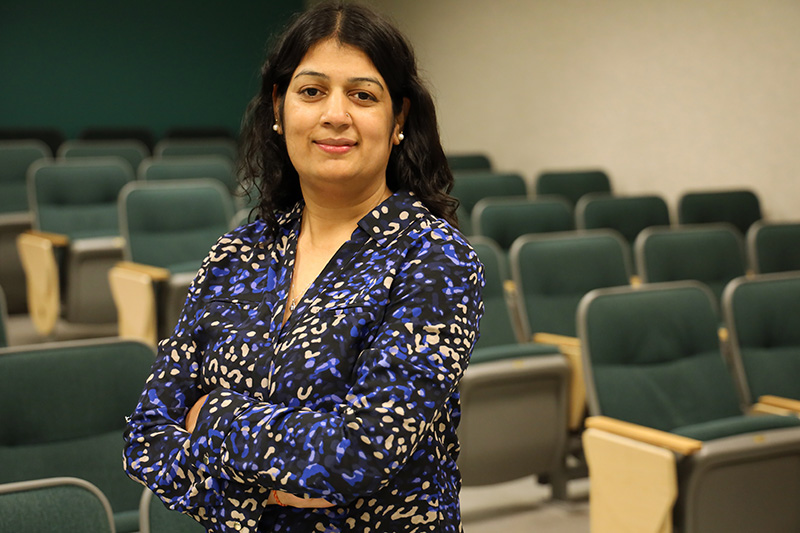VCU School of Dentistry receives NIH funding for collaborative research to improve children’s oral health

VCU School of Dentistry researcher Shillpa Naavaal, B.D.S., M.S., M.P.H., was recently awarded two National Institutes of Health (NIH) grants aimed at reducing oral health disparities in children. One of the grants, an R21 award (1R21DE032149-01) in which Naavaal is a co-principal investigator, examines multiple outcomes stemming from second molar sealant programs in a middle school setting. The other, an R15 award supplement (3R15DE031428-01S1) in which Naavaal is co-investigator, helps continue research studying barriers to the adoption of fluoride varnish applications in pediatric primary care and public health settings.
Naavaal, associate professor in the Department of Dental Public Health and Policy at VCU School of Dentistry and faculty member in the VCU iCubed Oral Health Equity Core, is collaborating on both research projects with Christina Scherrer, Ph.D., chair of the Industrial and Systems Engineering Department at Kennesaw State University.
“Dental pain and associated oral health problems are the leading cause of missed school for children, and much of it can be prevented with routine dental care,” says Naavaal. “A variety of socio-economic factors contribute to oral health disparities in children, but our projects seek to take advantage of settings that provide opportunities to facilitate interventions among most children and thus reduce unequal health outcomes.”
Naavaal and Scherrer’s two-year R21 grant provides funding totaling more than $400,000 to investigate the effect of second molar sealants on dental caries, the reach of middle school sealant programs in the U.S., and the impact of increasing access to second molar sealants through SBSPs on oral health and related disparities among adolescents. Dental sealants have been shown to be an effective tool in reducing dental decay. However, most school-based sealant programs (SBSP) are administered in elementary school, which is typically before most second molars are exposed enough to receive sealant application.
“We have a number of aims in this project, but essentially we’re looking at the feasibility and impact of the adoption of widespread second-molar sealant programs in a middle school setting,” says Naavaal. “If our data shows the potential for reducing adolescent oral health disparities, we hope it will lead to a subsequent R01 project supporting the increased implementation of these programs.”
Young children are much more likely to visit a primary care provider than a dentist, especially those from low-income households. Naavaal and Scherrer’s R15 project looks at the application of fluoride varnish during routine well-child visits as an option for reducing dental decay and oral health disparities. Originally funded in 2021, the researchers recently received an additional $154,000 to continue their research and expand it into Federally Qualified Health Center (FQHC) settings, ultimately aiming to optimize fluoride varnish application in the well-child workflow.
“Working with key stakeholders, primary care practices, and FQHCs, we are using a variety of methods to assess and reduce barriers preventing physicians from providing fluoride varnish applications in routine appointments. By establishing and widely disseminating a model that takes into consideration factors such as provider time, billing guidelines and other services provided during routine well-visits, we hope to establish a model that can be easily adopted by pediatricians throughout the country,” says Naavaal.
Categories Public Health, Research